| HOME |
|---|
SERPENS
The Serpent
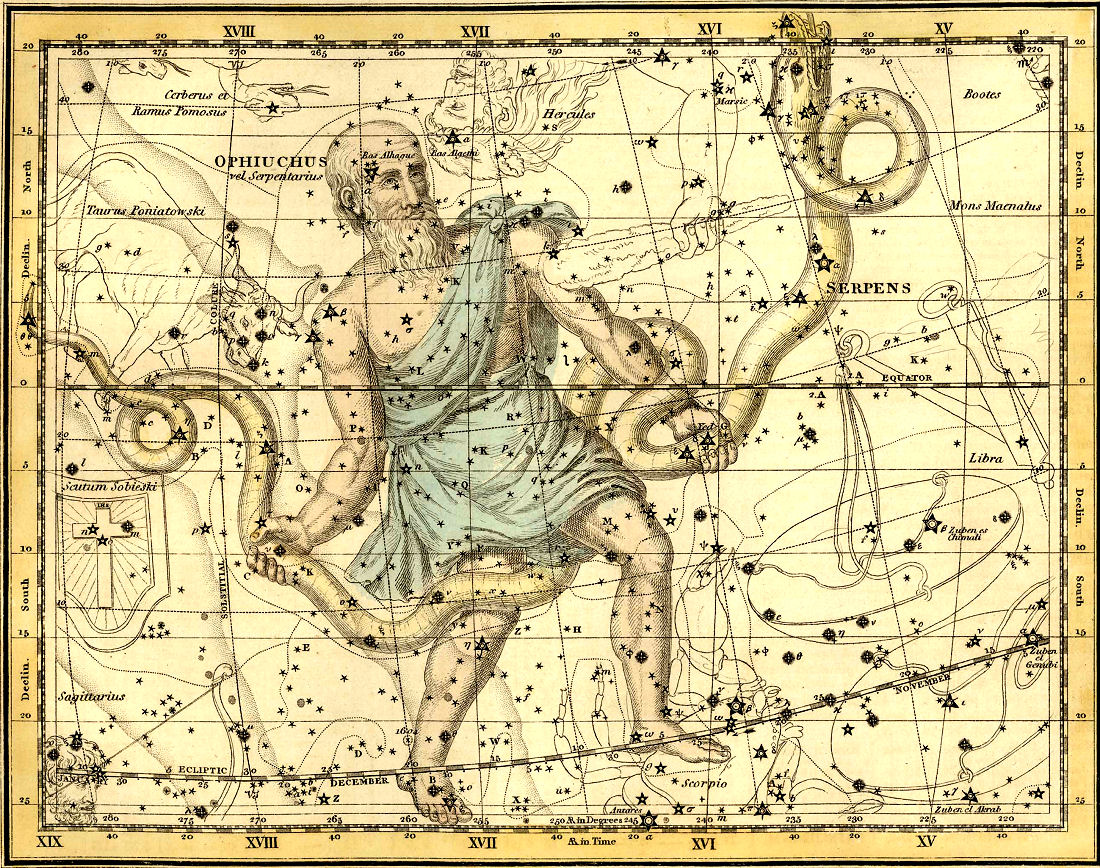
Serpens - Celestial Atlas by Alexander Jamieson - 1822
| HOME |
|---|

The constellation Serpens, the snake, represents the mythological serpent who revealed the secret of resurrecting the dead to the great healer, Asclepius, and was responsible for him becoming the god of medicine, and being immortalized among the stars as the constellation Ophiuchus, the serpent bearer.
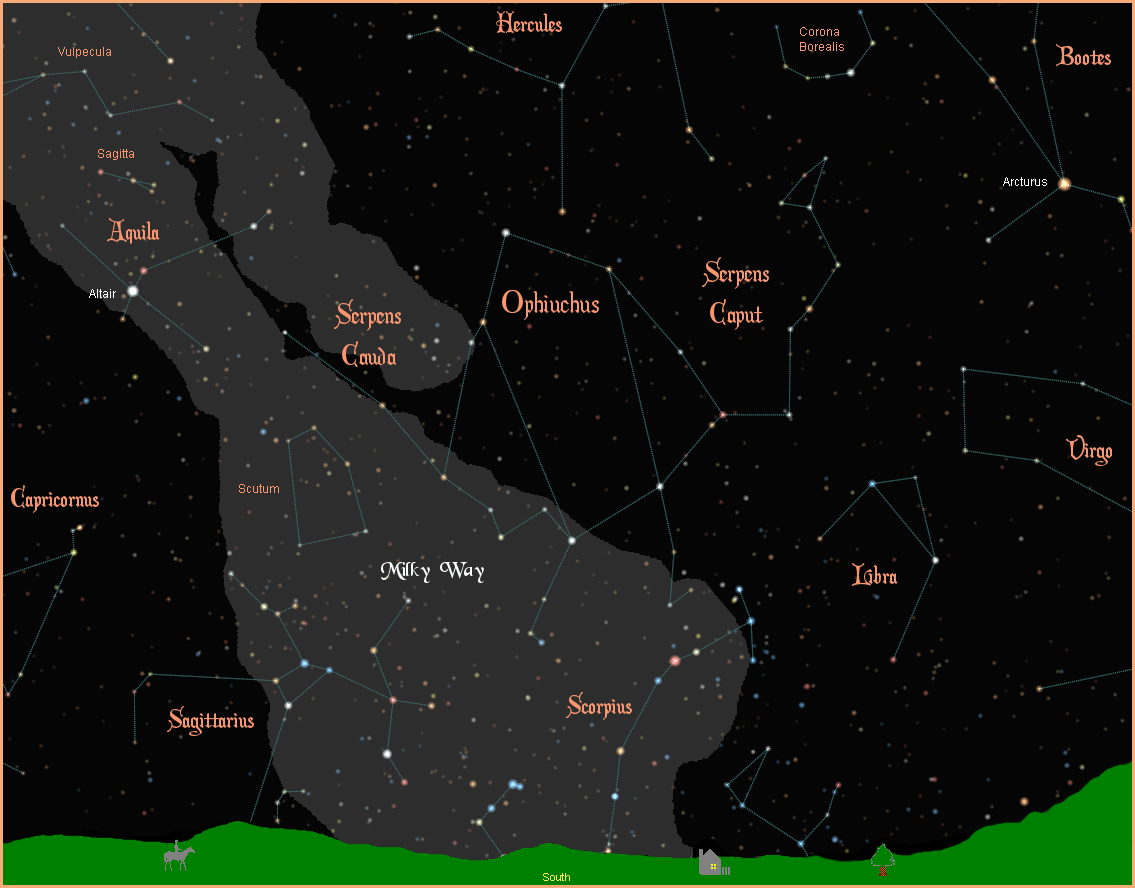
Serpens is the only constellation in the heavens to be split into two separate constellations, Serpens Caput (the head of the serpent), and Serpens Cauda (the tail of the serpent). Both constellations have their own separate boundaries, but both are connected to each other, and the constellation Ophiuchus. When Bayer instituted his Greek letter nomenclature in 1765, he treated Serpens Caput and Serpens Cauda as one constellation, so there is only one Alpha, Beta etc, between them.
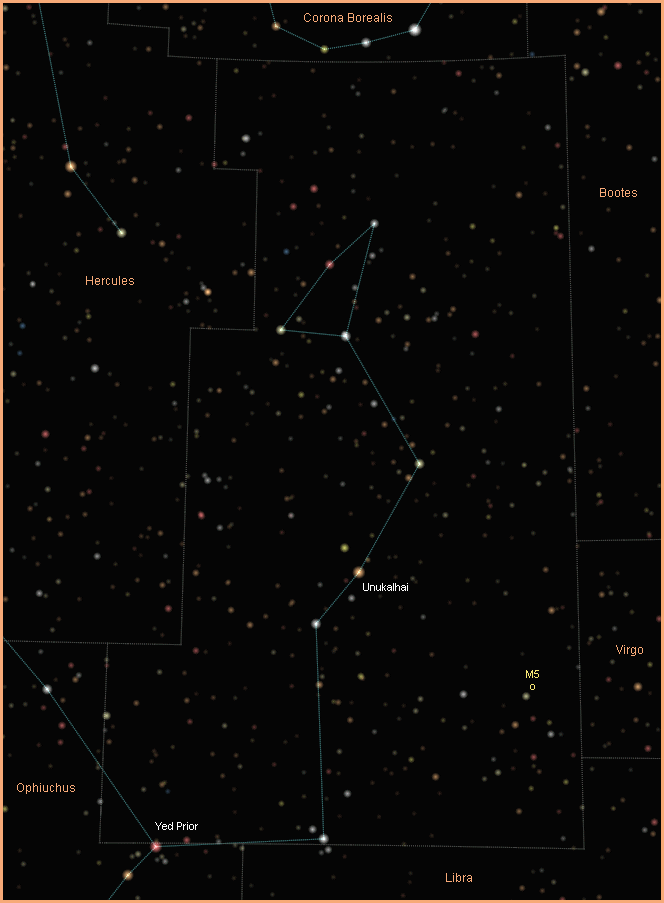
Alpha Serpentis is the brightest star in both constellations, named Unukalhai, from the Arabic for the neck of the snake. Sometimes known as Cor Serpentis, the heart of the snake, it is the only named star in Serpens Caput. It is a K2III yellow/orange giant, with a magnitude of 2.65, about 70 light years from Earth.
There are four stars with confirmed planets in Serpens Cauda. Three of these stars are very far away and beyond naked eye visibility with gas giant planets. The fourth star, Omega Serpentis, is still pretty far away at a distance of 253 light years, but being a big, bright G8III yellow/orange giant, it manages to shine at magnitude 5.2, making it just visible with the naked eye on a dark night. So far it has one confirmed planet 1.7 times the mass of Jupiter in a 277 day orbit, 1.1 AU from the star, slightly farther than Earth is from the Sun.
Serpens Caput also contains one of the biggest, brightest globular clusters in the sky, M5 (NGC 5904). Just beyond naked eye visibility at magnitude 6.65, M5 measures 165 light years in diameter. It resides at a distance of 24,500 light years, and is estimated to contain at least 100,000 stars.
Robert Burnham Jr., in his famous Celestial Handbook described his first view of M5 through a 40 inch telescope-
"... as if the fireflies of a thousand summer nights had been gathered there, frozen forever in time and suspended among the stars."
The vision reminded him of Isaac Asimov's famous book, Nightfall, about people on a planet inside a globular cluster, who lived in perpetual daylight, except for once every 2,049 years, when a series of solar eclipses allowed them to finally experience darkness, and the soul shattering sight of a star filled sky. Asimov himself was inspired to write the story by the words of Emerson-
"If the stars should appear one night in a thousand years, how would men believe and adore, and preserve for many generations the remembrance of the City of God which had been shown!"

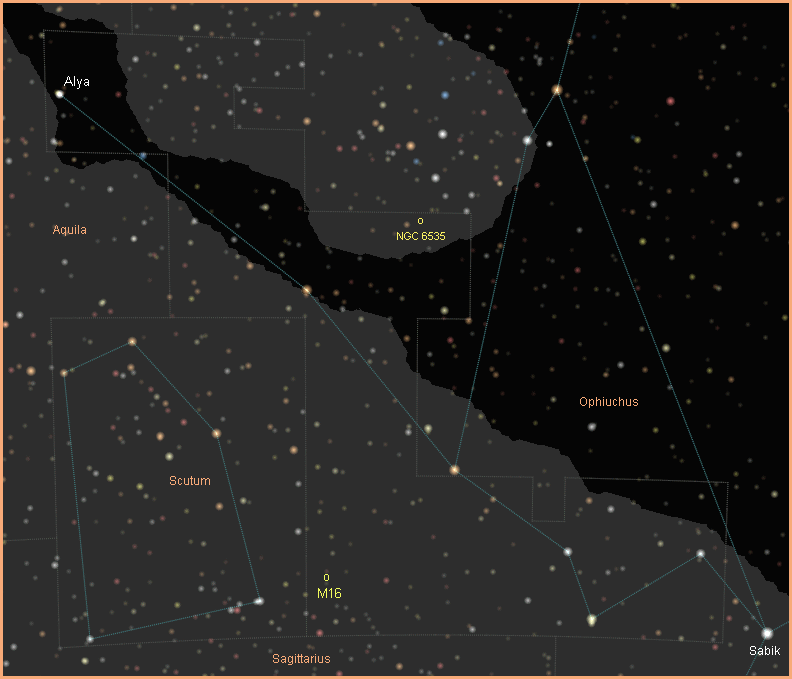
At the very end of the snake's tail is Theta Serpentis, named Alya, from an old Arabic word for tail. It is the only named star in Serpens Cauda. It is also a binary system that can be resolved in a small telescope, consisting of two almost identical A5V white main sequence stars. Separated by about 90 billion miles (900 AU), they take 14,000 years to orbit each other. From 130 light years away they shine as one, with a magnitude of 4.62.
There are 15 stars with confirmed planets in Serpens Cauda, but they are all very far away, well beyond naked eye visibility with very large gas giant planets. For more information on these and other extrasolar planets, visit NASA's New Worlds Atlas, and The Open Exoplanets Catalogue.
In 1764, when Charles Messier was investigating a star cluster found a few years earlier by the famed Swiss astronomer, Jean-Philippe Loys de Chéseaux, he described it as, "... a cluster of small stars enmeshed in a faint light," and he made it the sixteenth entry in his famous "Messier Catalogue" of mysterious, comet-like nebulosities in the night sky.
Modern telescopes revealed Messier's "faint light" to be a vast emission nebula 70 light years across, stretching far beyond the original star cluster. The nebula was given its own designation of IC 4703, and the star cluster in the centre was labelled NGC 6611. The cluster and nebula together retained the original M16 designation and was further dubbed The Eagle Nebula. Robert Burnham Jr. felt the name didn't do it justice, and renamed it The Star Queen Nebula.
Whatever you call it, it is quite a sight - a spectacular grouping of dazzling newborn stars embedded in an immense, brightly coloured cloud of ionized gas. From a distance of 7,000 light years, the star cluster shines with a magnitude of 6.0, putting it well within range of backyard telescopes.
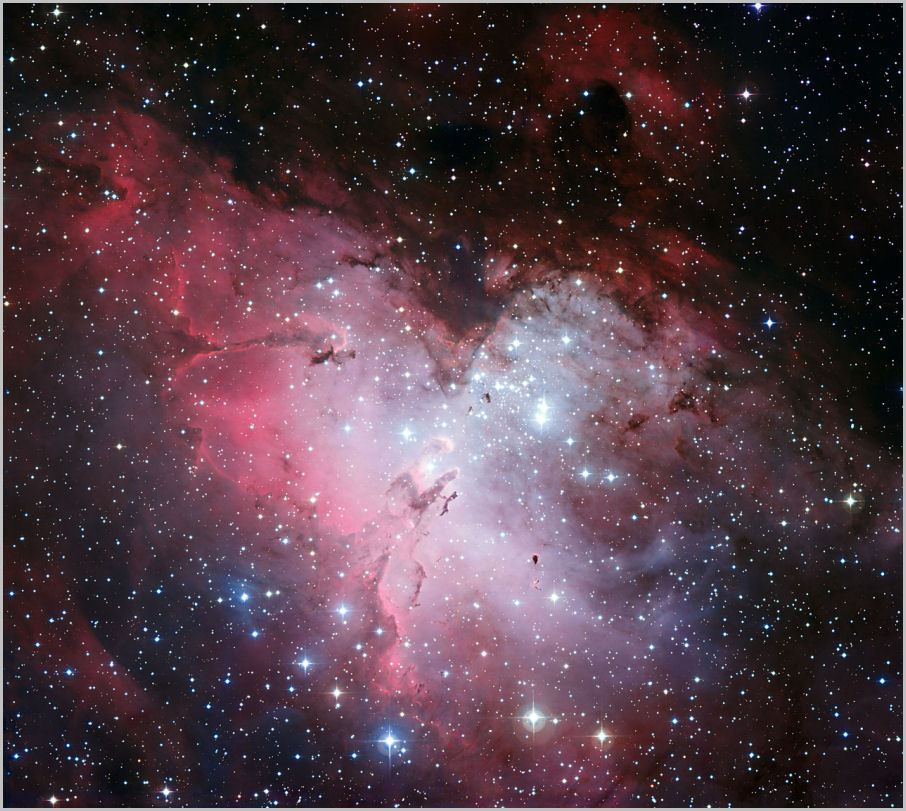
The Hubble Space Telescope took a look deep inside the centre of M16, capturing an iconic image of dense clouds of gas and dust in which stars are being born. Forming columns two to four light years high, they have been forever immortalised as The Pillars of Creation.
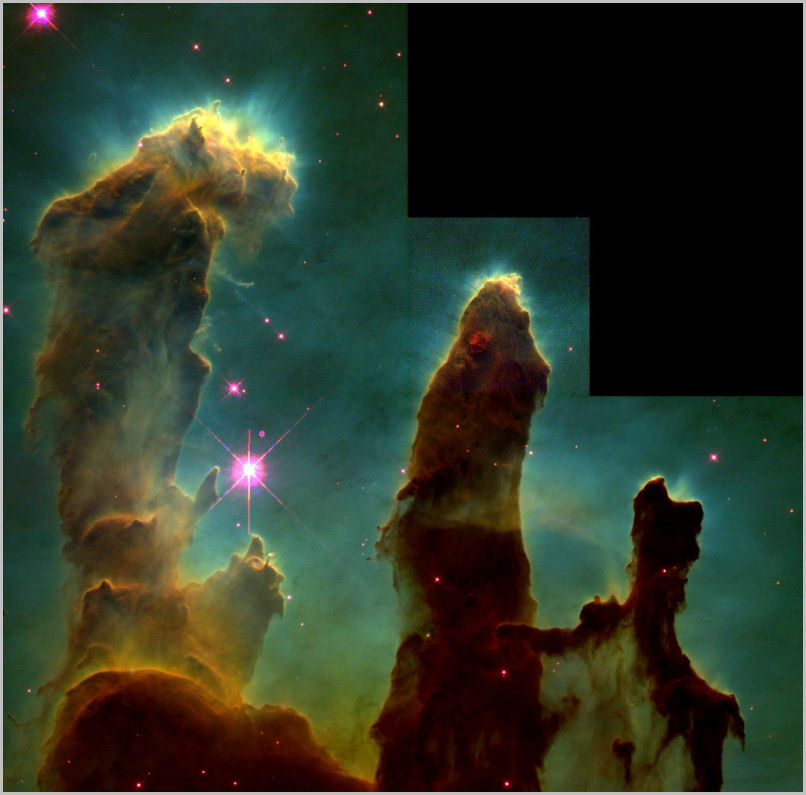
Serpens Cauda also contains a faint globular cluster, NGC 6535. At a distance of 22,000 light years and a magnitude of 9.3, the cluster measures one light year across.
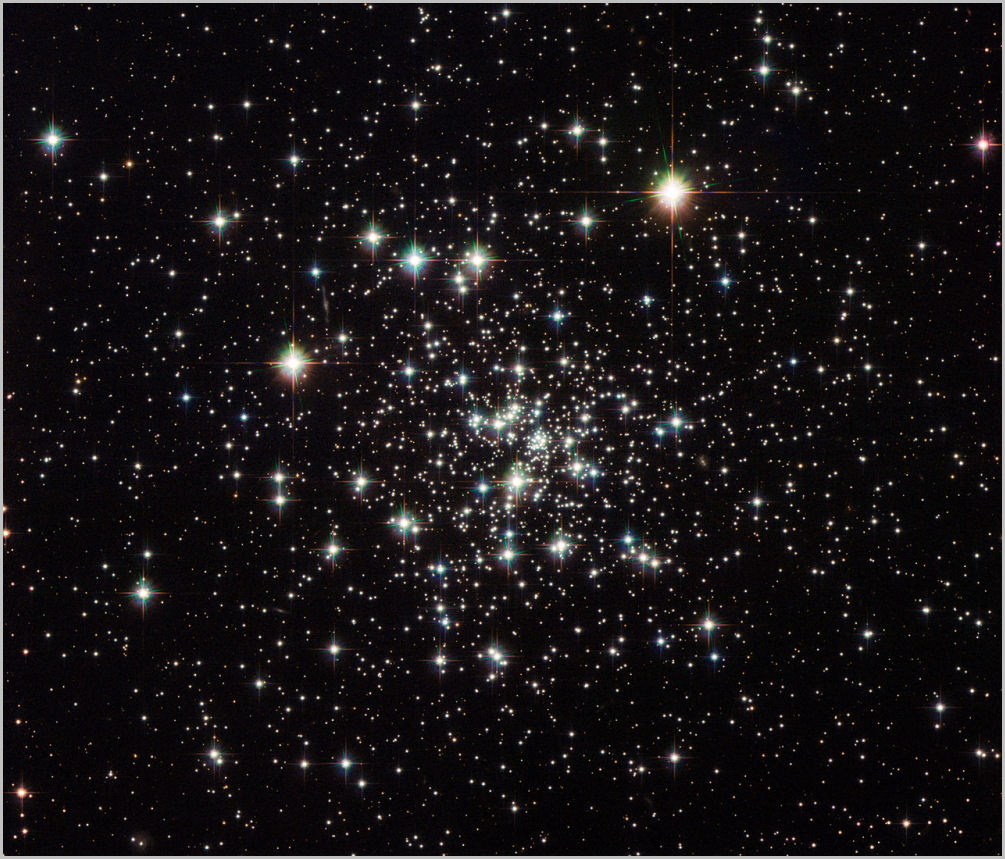
|
|
|
|
|
|